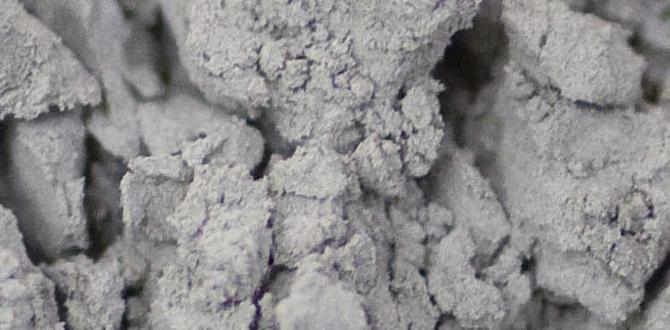Don’t toss your orchid after its blooms fade! Proper care post-flowering helps your orchid rebloom and thrive indoors. This guide explains how to prune, fertilize, and monitor its needs to ensure continued health and beauty throughout the year.
<h1>Orchid Care After Flowering: Your Essential Indoor Guide</h1>
<p>Seeing those beautiful orchid blooms finally fade can be a bit disappointing, right? It’s common for beginner plant parents to wonder, “What now?” Many think their orchid’s job is done and it’s time to move on, but that’s far from the truth! Your orchid is just resting, and with a little care, it can surprise you with a brand new show of flowers. This guide is here to demystify orchid care after the last petal has fallen, turning any post-bloom worries into confident gardening moments.</p>
<p>We’ll walk through simple steps to help your orchid recover, prepare for its next blooming cycle, and stay healthy and vibrant in your home. Get ready to discover the secrets to a continuously flourishing orchid friend!</p>
<h2>Why Orchid Care After Flowering Matters</h2>
<p>Once an orchid finishes blooming, it enters a phase of rest and growth. This period is crucial for two main reasons: replenishing energy stores for future blooms and maintaining overall plant health. Neglecting your orchid at this stage can lead to weakened growth, increased susceptibility to pests and diseases, and a significantly longer wait, or even an inability, to produce new flowers.</p>
<p>Think of it like a well-deserved break for your plant after putting on such a spectacular show. During this time, it focuses on developing new leaves, roots, and preparing the energy needed for the next flowering cycle. By understanding and providing the right post-flowering care, you are essentially investing in your orchid’s long-term well-being and ensuring it continues to be a source of joy and beauty in your home for years to come.</p>
<h2>Step-by-Step Guide to Post-Flowering Orchid Care</h2>
<p>Caring for your orchid after it has finished flowering is more about gentle observation and consistent, appropriate conditions than drastic changes. Let’s break down the essential tasks to help your orchid thrive.</p>
<h3>1. Pruning the Flower Spike</h3>
<p>This is often the first question on everyone’s mind: “Should I cut the flower spike?” The answer depends on the type of orchid and the condition of the spike itself. For most common orchids like Phalaenopsis (moth orchids), there are a few approaches.</p>
<ul>
<li><strong>Cut Above a Node:</strong> If the flower spike is still green and healthy, you can cut it about one inch above a visible “node.” Nodes are small, triangular bumps along the stem. Sometimes, an orchid will produce a secondary spike from a node, leading to more flowers, though often fewer and smaller ones than the initial bloom.</li>
<li><strong>Cut at the Base:</strong> If the flower spike has turned completely yellow or brown and dried out, it’s time to cut it all the way back to the base of the plant. This encourages the orchid to focus its energy on growing new leaves and roots, rather than trying to revive a spent stem.</li>
<li><strong>Leave it Alone:</strong> In some cases, especially if you’re unsure or the spike is still partially green, you can simply leave it be. The plant will eventually dry it out entirely and you can remove it then. However, cutting it back as described above often leads to quicker recovery.</li>
</ul>
<p>Remember to use clean, sharp pruning shears or scissors to make a clean cut, preventing disease and damage.</p>
<h3>2. Adjusting Your Watering Routine</h3>
<p>While your orchid was blooming, you likely maintained a consistent watering schedule. After flowering, it’s still important to water regularly, but pay even closer attention to the plant’s needs. Orchids, especially those in bark-based potting mixes, prefer to dry out slightly between waterings. Overwatering is one of the most common ways beginners kill their orchids.</p>
<p>Signs your orchid needs water include:</p>
<ul>
<li>The potting medium feels dry to the touch.</li>
<li>The roots inside the pot look silvery-gray instead of bright green.</li>
<li>The pot feels lighter when you pick it up.</li>
</ul>
<p>When you water, water thoroughly. Allow water to drain completely from the pot. Avoid letting the orchid sit in a saucer full of water, as this can lead to root rot. The frequency will vary depending on your home’s humidity, temperature, and the type of potting mix used, but typically it might be once every 7-14 days.</p>
<h3>3. Fertilizing for Future Blooms</h3>
<p>After flowering is the perfect time to start a regular feeding schedule to help your orchid build energy for its next bloom. During the growth phase (when it’s producing new leaves and roots), an orchid benefits from a balanced fertilizer. Once it shows signs of preparing to flower again (often indicated by a new flower spike forming), you can switch to a fertilizer slightly higher in phosphorus, which aids in blooming.</p>
<p>Use a fertilizer specifically formulated for orchids and always dilute it to half or quarter strength. It’s better to fertilize a little bit more often at a weaker concentration than to a lot less often at full strength. A common recommendation is to fertilize every other watering, or once a month, but always follow the product’s instructions.</p>
<p>You can find orchid fertilizers at most garden centers or online retailers. For example, brands like Miracle-Gro and Jack’s are popular choices. Always remember to water your orchid before fertilizing, as applying fertilizer to dry roots can cause burn.</p>
<h3>4. Light Requirements Post-Flowering</h3>
<p>Orchids need bright, indirect light to thrive and flower. After blooming, this requirement doesn’t change. They generally dislike direct sunlight, which can scorch their leaves. An east-facing window is often ideal, providing bright morning sun that isn’t too intense.</p>
<p>Signs of incorrect light include:</p>
<ul>
<li><strong>Too much light:</strong> Leaves may turn yellow or even reddish, and you might see brown spots (sunburn).</li>
<li><strong>Too little light:</strong> Leaves may appear a deep, dark green, and the plant may not produce flower spikes.</li>
</ul>
<p>The goal is a vibrant, medium green leaf color. If artificial light is necessary, full-spectrum LED grow lights are a great, energy-efficient option for indoor plants. Websites like the University of Florida IFAS Extension offer valuable insights into horticultural lighting requirements for various plants.</p>
<h3>5. Temperature and Humidity Considerations</h3>
<p>Most common indoor orchids, like Phalaenopsis, prefer temperatures that mimic comfortable room conditions for humans. Daytime temperatures of 65-80°F (18-27°C) and a slight drop at night (around 55-65°F or 13-18°C) are generally ideal. A temperature fluctuation between day and night is often a trigger for flowering, so don’t keep your orchid in a completely static environment.</p>
<p>Humidity is another key factor. Orchids are tropical plants and appreciate higher humidity levels than typically found in most homes, especially during winter when heating systems dry the air. Aim for 40-60% humidity.</p>
<p>Here are a few ways to increase humidity around your orchid:</p>
<ul>
<li>Place the orchid on a humidity tray: This is a shallow tray filled with pebbles and water. Ensure the bottom of the pot doesn’t sit directly in the water.</li>
<li>Group plants together: Plants release moisture through transpiration, so clustering them can create a more humid microclimate.</li>
<li>Use a humidifier: For persistent dryness, a small room humidifier can make a big difference.</li>
<li>Misting: While popular, misting can sometimes promote fungal growth if not done properly. If you mist, do so in the morning so leaves can dry completely before nightfall.</li>
</ul>
<h3>6. Repotting Your Orchid (When to Wait)</h3>
<p>Repotting is an important part of orchid care, but it’s not typically done immediately after flowering. The best time to repot is usually after new growth appears, such as new roots or leaves, or when the potting medium has broken down, typically every 1-3 years. Repotting a dormant or stressed orchid can set it back further.</p>
<p>Signs your orchid might need repotting:</p>
<ul>
<li>The potting medium is decomposing into a mushy mass.</li>
<li>Roots are escaping from the pot in large numbers.</li>
<li>The plant seems unstable in its pot.</li>
</ul>
<p>If you need to repot, use a specialized orchid potting mix. These mixes are usually bark-based and provide good aeration, which is crucial for orchid roots. You can find pre-made orchid mixes at most garden stores. The Royal Horticultural Society (RHS) offers excellent general advice on plant repotting that can be adapted to orchids.</p>
<h3>7. Monitoring for Pests and Diseases</h3>
<p>While your orchid is recovering and growing, it’s a good opportunity to inspect it for any signs of pests or diseases. Orchids are relatively hardy, but stressed plants can be more susceptible.</p>
<p>Common pests to watch for include:</p>
<ul>
<li>Mealybugs: Small, white, cottony masses often found in leaf axils.</li>
<li>Spider Mites: Tiny pests that create fine webbing and cause stippling on leaves.</li>
<li>Scale: Small, brown, or tan bumps that attach to leaves and stems.</li>
</ul>
<p>If you find pests, you can often treat them with insecticidal soap or neem oil. For fungal issues, ensure good air circulation and avoid overwatering. If you notice any signs of distress, try to identify the problem quickly and act accordingly.</p>
<h2>Common Orchid Types and Their Post-Flowering Needs</h2>
<p>While many general rules apply, understanding your specific orchid type can help you tailor its care. Here are a few popular indoor varieties and their post-flowering nuances:</p>
<table>
<thead>
<tr>
<th>Orchid Type</th>
<th>Flower Spike Care</th>
<th>Rest Period Clues</th>
<th>Reblooming Tips</th>
</tr>
</thead>
<tbody>
<tr>
<td>Phalaenopsis (Moth Orchid)</td>
<td>Cut green spike above a node for potential rebloom from it, or cut at base if yellow/brown.</td>
<td>Leaves remain firm, may see new root or leaf growth.</td>
<td>Consistent bright, indirect light; slight night temperature drop; balanced fertilizer.</td>
</tr>
<tr>
<td>Cattleya</td>
<td>Once blooms fade, remove the entire old flower stem from the base. New growth will emerge from pseudobulbs.</td>
<td>New pseudobulbs begin to swell, signaling active growth.</td>
<td>Bright light, good air circulation, allow to dry slightly between waterings, higher phosphorus fertilizer when pseudobulbs mature.</td>
</tr>
<tr>
<td>Dendrobium</td>
<td>Most types drop their flowers and then continue to bloom on older stems or new growths. Cut old, leafless canes at the base if they are completely spent.</td>
<td>New cane growth or smaller growths near the top of older canes.</td>
<td>Bright light, good watering during growth and slightly drier during dormancy (often late fall/winter for some species).</td>
</tr>
<tr>
<td>Oncidium (Dancing Lady)</td>
<td>Flower spikes are typically pseudobulbs. Cut the spike back to the base once it has finished flowering and the leaves have dried slightly.</td>
<td>New pseudobulb development and leaf growth.</td>
<td>Bright light, prefer to dry out a bit more than Phalaenopsis, good humidity.</td>
</tr>
</tbody>
</table>
<h2>Common Mistakes to Avoid</h2>
<p>Even with the best intentions, some common pitfalls can hinder your orchid’s recovery. Being aware of these can save you a lot of frustration.</p>
<h3>Overwatering</h3>
<p>As mentioned, this is the number one killer of orchids. Remember that orchid potting mixes are designed for fast drainage to mimic their natural epiphytic environment.</p>
<h3>Incorrect Light</h3>
<p>Too much direct sun will burn the leaves, while too little will prevent the plant from having the energy to produce new flowers. Finding that “bright, indirect” sweet spot is key.</p>
<h3>Using the Wrong Potting Medium</h3>
<p>Regular potting soil compacts too much and retains too much water for orchids, leading to root rot. Stick with orchid-specific mixes.</p>
<h3>Not Allowing a Rest Period (for some types)</h3>
<p>Some orchids require a distinct dry or cool rest period to set buds for the next blooming cycle. Research your specific orchid’s needs.</p>
<



